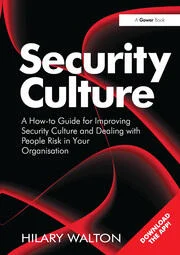Being proactive creates a future-proof security strategy

Image via Pixabay
As companies’ efforts to increase efficiency and cut costs continue, there is one key area that is all too often overlooked: security. But, how can an IT team react efficiently to the myriad of cyber threats that are increasing in frequency and magnitude? It’s vital for companies to make a shift to a less reactive and more proactive security strategy. By adopting a proactive security model, companies are not only more secure, but also more efficient and able to save money during these tumultuous markets. It’s important to change the mindset and approach security from a more proactive viewpoint.
Reactive vs. proactive
So what is it that distinguishes a proactive strategy from a reactive one? Reactive security is often implemented after a cyber threat is encountered. Proactive security, in contrast, seeks to prevent these threats from occurring in the first place.
By adopting a proactive philosophy, organizations can identify and prevent potential issues before they become problems, helping to protect their systems, networks and data from attack. There are three main aspects of proactive cybersecurity that should be in every organization's playbook: approaching the problem as a red teamer would, leveraging a zero trust philosophy and pitting automation against automation.
Taking a red teamer mindset
The first approach is to attack cybersecurity problems as a red teamer would. A red teamer is a security expert who simulates real-world attacks on an organization's systems and networks in order to identify potential vulnerabilities and weaknesses. Looking at threats as a red teamer would allows a view of how organization could be attacked to provide a better understanding of what steps to take to prevent these types of attacks.
A common example of what a red team might do within an organization is to simulate a phishing attack on employees in order to identify which employees are most likely to fall for the scam. The red team can then provide training and education to those employees, helping to prevent the attack from being successful in the future.
Red teams today need to address more than a simple phishing attack, however. Cyberattacks driven by malicious automation, or bots, are constantly looking to gain access to businesses. Bots are used to scrape information, conduct credential stuffing or account takeover attacks, or worse. In order to understand whether the correct defenses are in place, red teams can simulate bot attacks, looking for weak spots in their defenses. If bots cannot be identified and stopped before they’re able to enter a site, it’s a good indication that an organization’s defenses need an upgrade.
Adopting a zero trust philosophy
The second approach is to leverage a zero trust philosophy. A zero trust philosophy is based on the idea that no person or system can be trusted by default and that all access to an organization's systems and data must be verified and authenticated before it is granted. By adopting a zero trust philosophy, organizations can ensure that only authorized users are able to access their systems and data, helping to prevent unauthorized access and potential attacks.
A zero trust approach, however, only works if it is comprehensive and covers all aspects of cybersecurity defenses. With hundreds of bots attempting to gain access to businesses each and every day, it is critical to take that same zero trust philosophy and apply it to bot defenses. Many organizations operate under the premise that it is acceptable to allow bots to gain access to your site first, to monitor behavior, before they are stopped. The line of thinking is that defenses are needed to encounter the attack, so they know what they’re dealing with and can counter it effectively. However, by definition, that’s no longer a true zero trust approach.
To implement zero trust, cybersecurity solutions need to prevent attackers from gaining access in the first place. In the bot world, that means recognizing when there is automation and stopping it before entry is successful.
Matching automation with automation
The third approach is to pit automation against automation. This involves using automation to identify and prevent potential attacks on an organization's systems.
In many organizations, however, there is still the underlying belief that only the most mundane and low-risk tasks and defenses can be automated. They feel that anything that’s a bigger, more aggressive or larger-risk attack needs the insight and intervention of a security team member. With the advances in automation technology that have been made over the past few years, this couldn’t be further from the truth.
Attackers improve their attacks and the tools they use each and every day. Attackers learn from what works and what doesn’t, and continually tweak approaches and tools to maximize success and profitability. It is this need to stay ahead of all cybersecurity defenses that drives them and their automated attacks.
Fraudsters and cybercriminals use bots for a variety of purposes — to crack accounts, to secure in-demand goods, to scrape data, to test zero day vulnerabilities, etc. If there’s a possibility to profit from an attack, it’s a guarantee that malicious automation will be employed to accomplish it as quickly as possible, and at as large a scale as possible.
This is why organizations need to employ — and trust — automation to defeat automated attacks. No matter how well-educated a security analyst and their team is, the attackers will always be constantly evolving their attacks, optimizing them for speed and efficiency. There is no way that security teams can compete with that. Teams might feel that they need to retain involvement and control of settings and responses to automated attacks, but it would be a full-time job just to maintain the status quo. Attackers have the time, motivation and resources on their side.
In addition, security team members will always have other responsibilities chipping away at the time they can spend updating their organization’s defenses. Add to this the third variable — labor issues — and it’s a recipe for disaster. Just this year, the combination of a skilled labor shortage and hiring freezes have resulted in unfilled positions that won’t be filled in the short term or understaffed teams that are stretched too thin.
The need to invest in quality automated tools that can fight against the sophisticated automation that cybercriminals are using has never been more evident.
The pros of being proactive
Proactive cybersecurity is essential for protecting any organization from potential threats. By adopting a red team approach, leveraging a zero trust philosophy and pitting automation against automation, organizations can identify and prevent potential issues before they become problems, helping to protect systems, networks and data from attack.
With a proactive cybersecurity strategy, passing compliance checks will be much easier with a constantly up-to-date proactive model, customers are more likely to invest their trust with a company that prevents breaches before they can happen, a company can stay up to date with the latest in hacking strategies, costly reactive security measures can be scaled back and simplified, and manpower can be focused on enduring recession conditions and protecting the interests of the company.
Ultimately, by choosing to be proactive, a company is offering a brand that is trustworthy, maintainable and well adapted for the future; something that’s sure to be a recipe for success now and beyond.
Looking for a reprint of this article?
From high-res PDFs to custom plaques, order your copy today!









